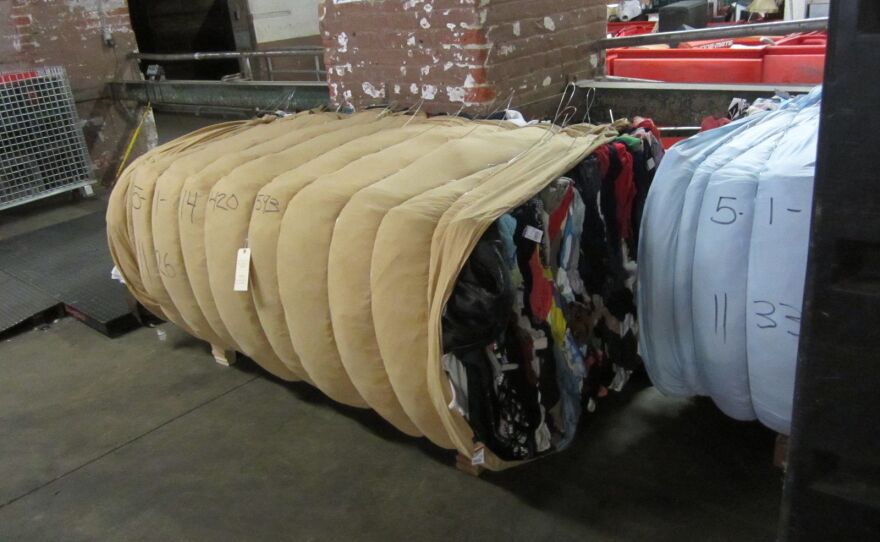It can be hard to donate your old things to a thrift store, but the idea is that your stuff will get a second life. Once it is donated, it will make its way to new owners. But what does it take to get those things ready to be used again?
At 26th and Valencia in San Francisco is a nondescript three-story warehouse that used to be an old shoe factory. Now it is where the endless Salvation Army donations are sorted, and it is like a little city inside.
The Unloading Dock
“So right now we are on the unloading dock,” Cindy Engler, the community relation manager for the Salvation Army, walks me through the process here. We are looking at trailers piled full of garbage bags, boxes, lamps, stray stuffed animals - the stuff here just keeps on coming in, and this place is loud.
“So, this is the first step,” she says. “It’s unloaded from the truck and then it’s sorted into categories depending on which part of the building it’s going to go to for more sorting.” All the donations from north of San Francisco down to Redwood City arrive at this dock.
Touring the Warehouse
Engler and I go deeper into the enormous three-story warehouse. Everywhere you turn, there are people sorting through donations into hundreds of plastic carts. Each section of the warehouse has it’s own specialty: There’s a five-room library with books shelved 20 feet high, a place where they bake mattresses in a giant oven to make sure they’re safe to resell, and a section for bric-a-brac.
Engler goes through one of the carts. “Figurines, stuffed animals, baskets, you just don’t what’s going to come through here,” she exclaims.
Clothes
But the largest district in Salvation Army city is where the clothes end up.
“These clothing items most likely came in yesterday,” Engler says, as we walk by people going through piles of clothes.
“We sorted them this morning and they’re getting ready to be in the stores tomorrow.” Engler adds, “We process 12,000 articles of clothing a day.”
The clothes that cannot be sold get put in the baler. The baler is a giant press that squashes all the unsellable clothes into a cube the size of a bed. Engler takes a look at the weight of one of the bales, “This one is 1,118 pounds.”
That bale will then get sold to someone else who will most likely use it for something like carpet padding.
“So there is life to items that are even torn and damaged,” Engler tells me. “We make something go a long way. We appreciate every donation.”
Rehab Program
The building just keeps on going; it is like a labyrinth. There is a kitchen, a chapel, and Engler tells me there used to be a bowling alley. Out of nowhere a bell rings--it’s lunchtime.
This building is not just a warehouse, it is also a home. Working in the warehouse is part of the Salvation Army’s drug and alcohol rehabilitation program. Participants spend six months here, living, working and getting treatment. Engler tell me that 112 men live here, and they get three meals a day.
The program is free and profits from the store across the street help fund it. Each participant has a full-time job, personal and group counseling, and spirituality is a big part of it too. The Salvation Army is a 501c3, and describes itself as an “evangelical part of the universal Christian Church.”
Jeff Heaf completed the program in 2012. He says it is good that the men are kept busy.
“You’re not thinking about so much of what’s happened in the past,” he says. “You can look towards the future and work towards goals. I needed to have god in my life and I needed to learn how to work again and that is what this place taught me.”
At the Store
I walk across the street to the store. These things that used to be owned by someone else now look like they could be mine. I peruse the ties, and in the furniture section I find an old piano. Finally, in kitchenware, I find a perfectly good plate for $1.39. I decide to buy it.
That plate went through a lot of hands to get into my bag. You could say, an army of hands. And who knows, if I don’t break it, it may find its way through here again.
Click the player above to listen to the full story.












